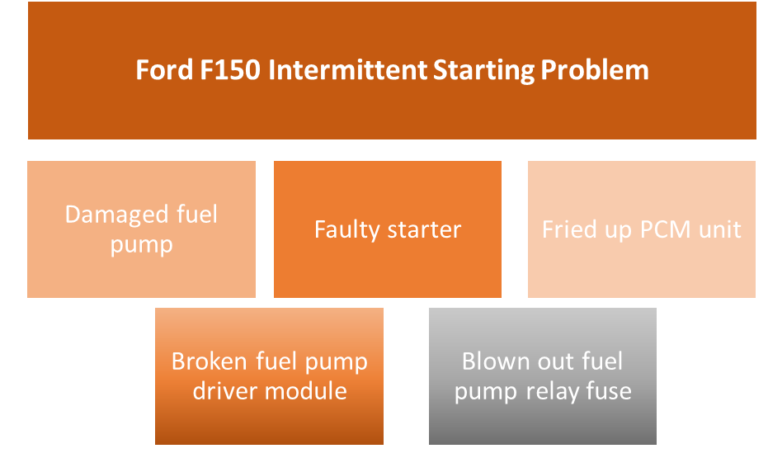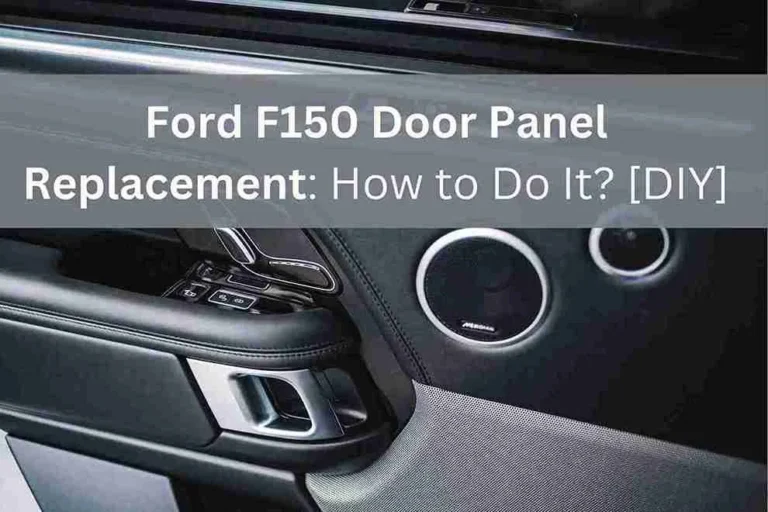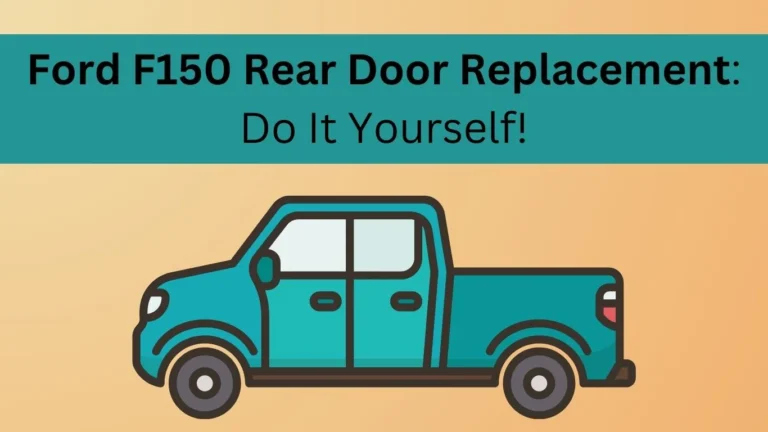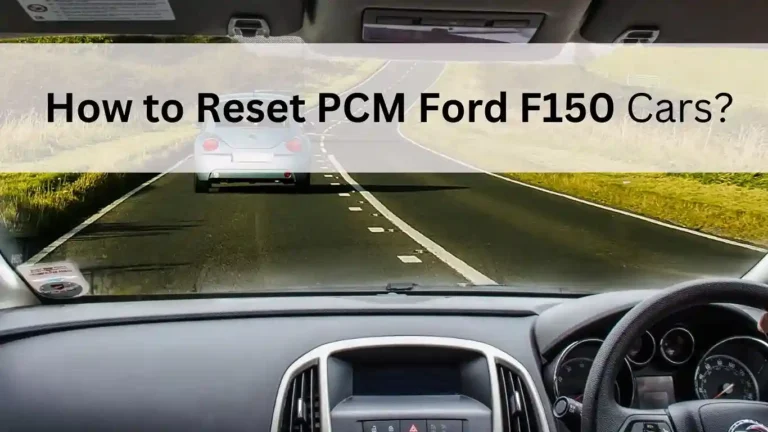The Ford F150’s intermittent starting problem mostly happens due to part or fuse issues. A bad fuel pump, starter, PCM unit, fuel pump driver module, or fuel pump relay fuse causes this kind of bug. To fix it, you’ll either need to replace the damaged part or fuse.
You see, the car will crank for a short cycle and then won’t start. If this ever happens, don’t worry! In this guide, I’ll share the possible reasons and solutions that you can try at home.
Let’s get started!
Table of Contents
5 Reasons and Fixes for Ford F150 Intermittent Starting Problem!
You’ll find many reasons why your F150 is not starting instantly or cranking up irregularly. In most cases, it happens due to 5 possible reasons which I’ve mentioned below along with their fixes. Take a look at the table for a secret look:
| Causes | Repairs |
| Damaged fuel pump | Replace the fuel pump |
| Faulty starter | Change the starter |
| Fried up PCM unit | Replace the PCM unit |
| Broken fuel pump driver module | Remove and install a new fuel pump driver module |
| Blown-out fuel pump relay fuse | Change the fuel pump relay fuse |
1. Bad Fuel Pump
Because of the faulty fuel pump, your 2000 – 2016 Ford F150 intermittent starting problem may occur occasionally.
As it fails to pump fuel to the car’s engine, the car may crank for a while but eventually won’t start. To troubleshoot this issue, you’ll need to change the fuel pump.
How to Fix?
- You’ll need to jack up the car with a transmission jack stand to reach the fuel tank support adapter underneath.
- Then, locate the fuel lines and squeeze the plastic tabs to detach the lines easily. After that, disconnect the fuel line that has a red clip on it and you’ll need to use a screwdriver to detach it properly.
- Next, grab a 13mm socket to detach the bolts that hold the fuel tank underneath the car. Ensure to detach the metal strap that holds the fuel tank.
- Now, slowly lower the fuel tank housing by detaching the retainer shield nuts. Then, you’ll need to detach the filler neck by using the 7mm socket to remove the hose clamp. Be sure to use a flat screwdriver to take out the filler neck.
- Afterward, track the small hose and disconnect it by pressing the clips. Then, use the flat screwdriver to pry the locking tab out to disconnect the plugs that are attached to the fuel tank.
- After this, lift the fuel tank area and spray some WD40 lubricant on the metal part. Let it be like this for around 30 minutes.
- Then, twist the metal ring on the fuel tank to lift the tank itself. Make sure to remove all the connectors above.
- After that, install a new one and reinstall all the removed parts.
For a better understanding of the above details, check this video guide that explains the process. Here’s the guide:
Repair Cost: $800 – $1,500 or more ($250 – $650 or above for part and the rest for labor).
Duration: 60 – 180 minutes.
2. Damaged Starter Part
Most of the time, the starter is the main culprit for your F150 to start and stop for a long period. When the starter fails to work, the car may crank and then fail to start.
A damaged starter is also often the reason behind a failure to start f150 with no clicking noise. You can fix it by changing the starter part to a new one.
How to Fix?
- To start with, open the hood of your F150 and disconnect the black negative (-) terminal of the battery. Ensure to place a towel over the battery and place the open battery terminal.
- Then, jack up the car and get underneath the car to find the starter part. It’s mostly on the transmission bell housing (on the passenger side of the engine block).
- Once you find it, use a 13mm socket tool to detach the 4 nuts and wires. Then, insert a 6” extender on the socket and take out the 3 bolts that hold the starter part on the engine block’s lower side.
- After that, use a hammer to remove the old starter part from the spot and install a new one. Then, reinstall all the detached parts.
Repair Cost: $400 – $850 or more ($250 or above for part and the rest for labor).
Duration: 30 – 40 minutes.
3. Faulty PCM Unit
The issue with F150 cars not always starting instantly can happen if the Power Control Module (PCM) stops working. Further damage to the PCM unit can also result in a f150 that won’t start while there’s no clicking noise.
Flagship One discussed clear indicators of a problematic PCM unit in F-150s. Warning lights on the dashboard, erratic shifting, and difficulty connecting an OBD2 scan tool are key indicators.
As the part can’t communicate with the emission controls, charging system, and transmission, the car just cranks when you twist the key but won’t start. To fix it, you have to take out the old PCM and put in a new one. If you are also facing a theft light blinking but the unit failing to start, then the culprit could be a faulty PCM power relay fuse.
How to Fix?
- Start by opening the hood of your Ford F150.
- Then, locate the PCM unit in the front (right behind the passenger seat area).
- After that, disconnect the battery’s black negative (-) terminal after detaching the nut with the proper socket wrench. Be sure to use a towel to avoid electrical interference.
- Next, detach the 3 connectors that are inserted into the PCM unit.
- Now, use a 10mm socket tool to take out the 4 bolts that hold the PCM unit and then remove the part.
- Afterward, install the new PCM unit in the same spot and attach the 4 bolts using the same tool. Then, reinstall all the parts by doing the reversal process.
Repair Cost: $700 – $900 or more ($650 or above for part and the rest for labor).
Duration: 45 minutes.
4. Cracked Fuel Pump Driver Module
Every now and then, your car might have trouble starting because of a problem with a fuel pump driver module (FPDM).
In the new or old 2012 Ford F150 intermittent starting problem mostly occurs due to this. Moreover, a damaged fuel pump drive module can also result in the f150 turning over but failing to start. You’ll need to replace the fuel pump driver module to make your car start reliably at once.
How to Fix?
- First, insert the jack pads and stand under the car before lifting it.
- Then, use a trolley to get under the F150 and locate the fuel pump driver module part. It is mostly located on the cross beam underneath the F150. Based on the car’s year, search for it in your owner’s manual to know the exact location.
- Next, reach this part and unplug the connector of the fuel pump driver module.
- Afterward, take an 8mm socket tool to detach the 2 bolts that hold the driver module in the cross beam of the car.
- Then, detach the fuel pump driver module part and install a new one. After that, reinstall all the parts to finish the process.
Repair Cost: $300 or more ($150 or above for part and the rest for labor).
Duration: 30 – 35 minutes.
5. Burnt Fuel Pump Relay Fuse
The fuse in your car is like a safety guard that stops the car’s parts from getting too hot or giving you an electric shock.
Sometimes, the damaged fuel pump relay fuse can cause old or new (1993 – 2018) Ford F150 intermittent starting problems. To fix this issue, replace the broken fuel pump relay fuse.
How to Fix?
- To start with, you’ll need to locate the passenger compartment fuse box that is inside the car. Based on the year of the F150 model you have, the location of this fuse box will be diverse.
- Once you get the spot, open the trim cover that hides the fuse box and locate the 15A or 20A fuel pump relay fuse.
- After that, remove the fuse and inspect it carefully to find burnt or melting marks. If it seems bad in condition, replace the fuse with a new one and put everything back on the spot.
Repair Cost: $100 or more ($5 or above for part and the rest for labor).
Duration: 5 minutes.
Frequently Asked Questions
How can I diagnose the intermittent starting problem in my F150?
Start by checking the starter whether it is getting the power from the battery or not. Then, inspect the condition of the PCM unit and fuel pump driver module. After this, check the fuel pump relay fuse’s condition and then the fuel pump.
What is the common sign of an F150 intermittent starting problem?
The car not making a smooth start is the most common sign of an intermittent starting issue. In general, the car will make a click sound and take longer to start the car. After several trials, you can start the car.
Is it safe to drive my Ford F150 with intermittent starting problems?
It’s safe to drive your F150 even if an intermittent starting issue occurs! If the car starts after some attempts, you can continue driving your F150 car. But, it would be better if you repaired the issue before taking your car.
Ending Notes
It’s that easy to fix the Ford F150’s intermittent starting problem once you know the root cause. If the above solutions seem hard or confusing, I would suggest seeking the help of an expert from a nearby auto shop.
I hope you find this guide helpful to find the reasons along with their solutions and be sure to try the solutions if you have the gears. Good Luck!




